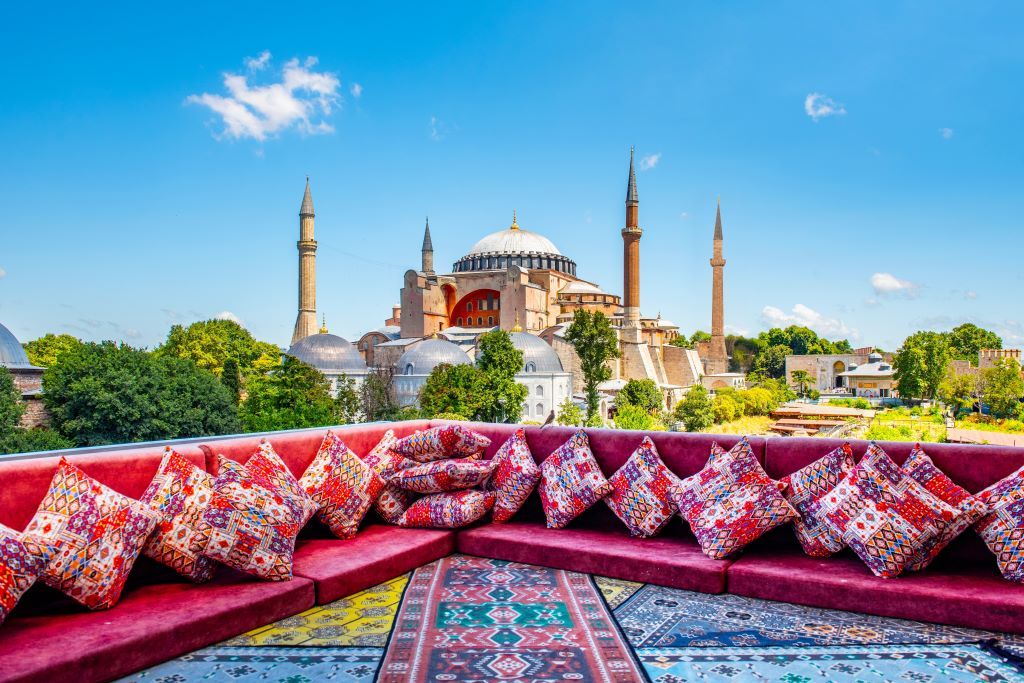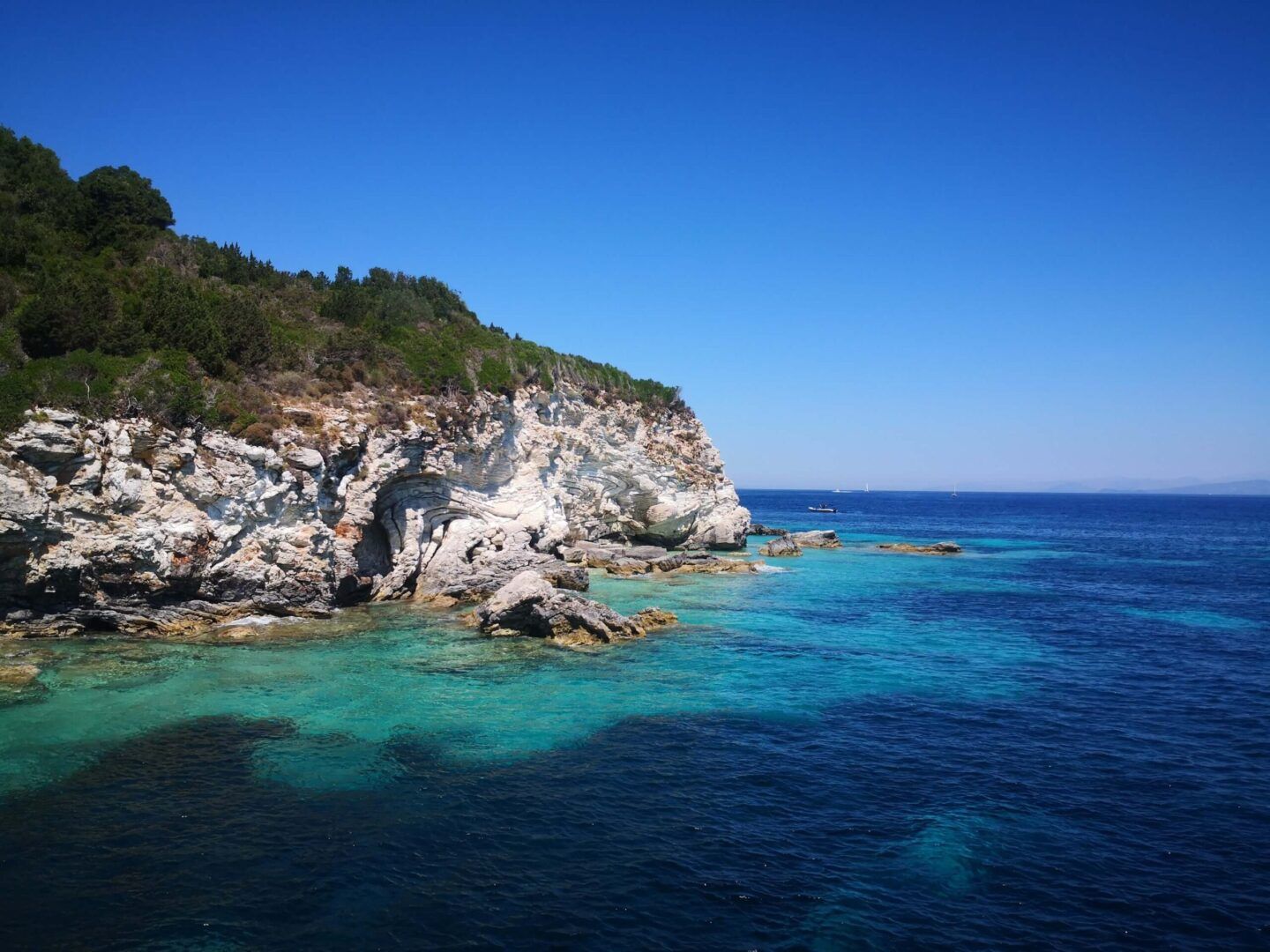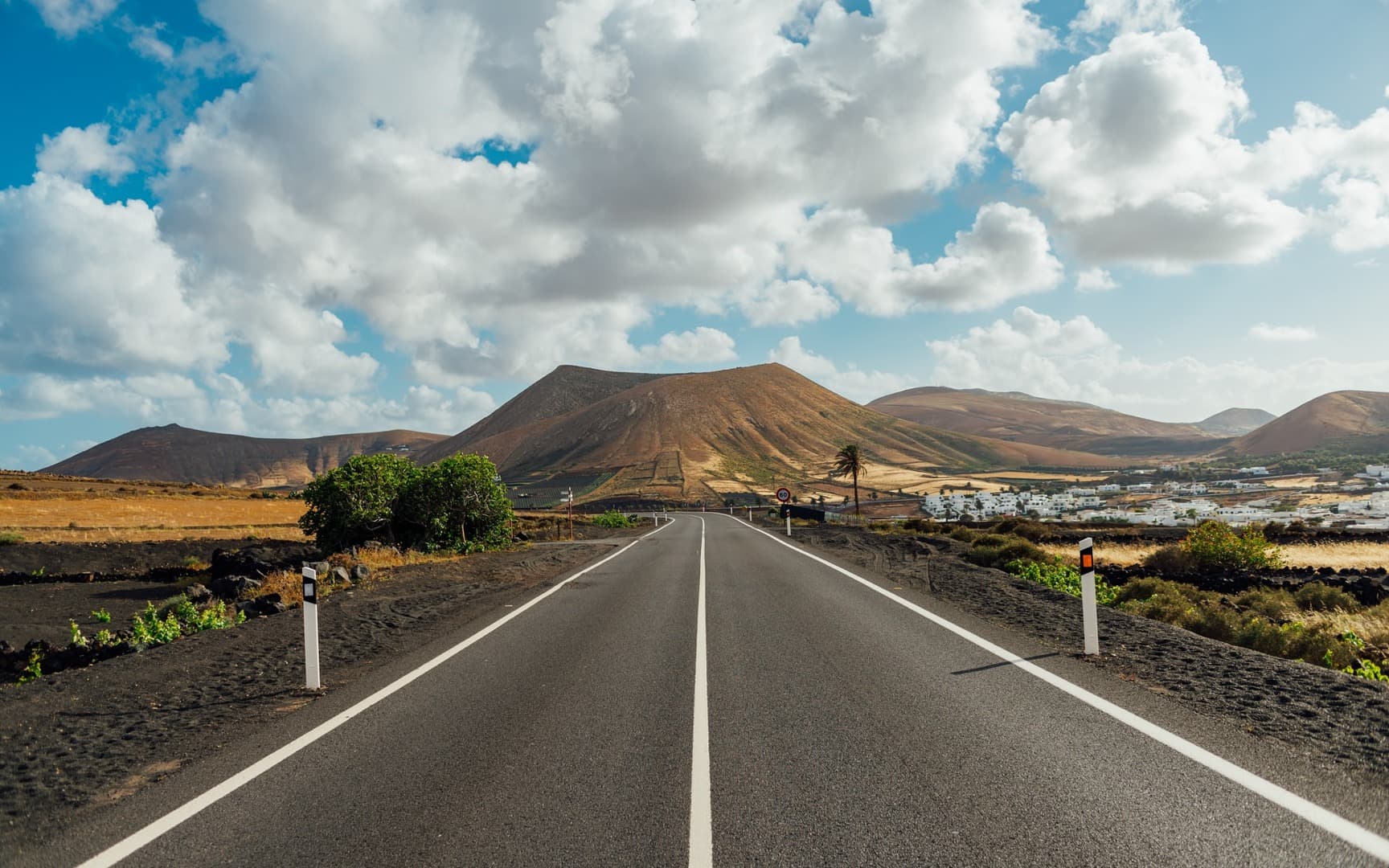

Who hasn’t daydreamed about setting off for the Canary Islands, especially in winter? But are we all aware that this archipelago does not only offer hot temperatures all year round? The Canary Islands are a surprising and vast territory. Considering pieced together, their extension overshadows Lincolnshire in the UK. Our focus today is on which places to visit in Lanzarote. We are giving you a couple of tips so that you don’t miss the most beautiful activities!
Lanzarote is an island in the Canary Islands archipelago, the northernmost and only 140 km from the Moroccan coasts. Given that its entire territory represents the perfect symbiosis between man and nature, it has been a UNESCO Biosphere Reserve since 1993. The works of César Manrique, a well-known Spanish artist originally from the island, have helped to strengthen this bond. This has made Lanzarote extraordinary and unique.
It is the fourth island in the archipelago by size, with an area of 845 square kilometres. With about 250 km of coastline, it boasts countless cliffs, lava landscapes, white beaches and rocky coves. Sports lovers often mention Lanzarote: home of surfing, kitesurfing and the most daring who train or compete for Ironman.
But the island is also the right place to relax and discover how art and nature can be together! In this article, we will discover together which are the best places to visit and what to do in Lanzarote, which is considered the pearl of the Canary Islands.
Places to visit in Lanzarote: The island and its history
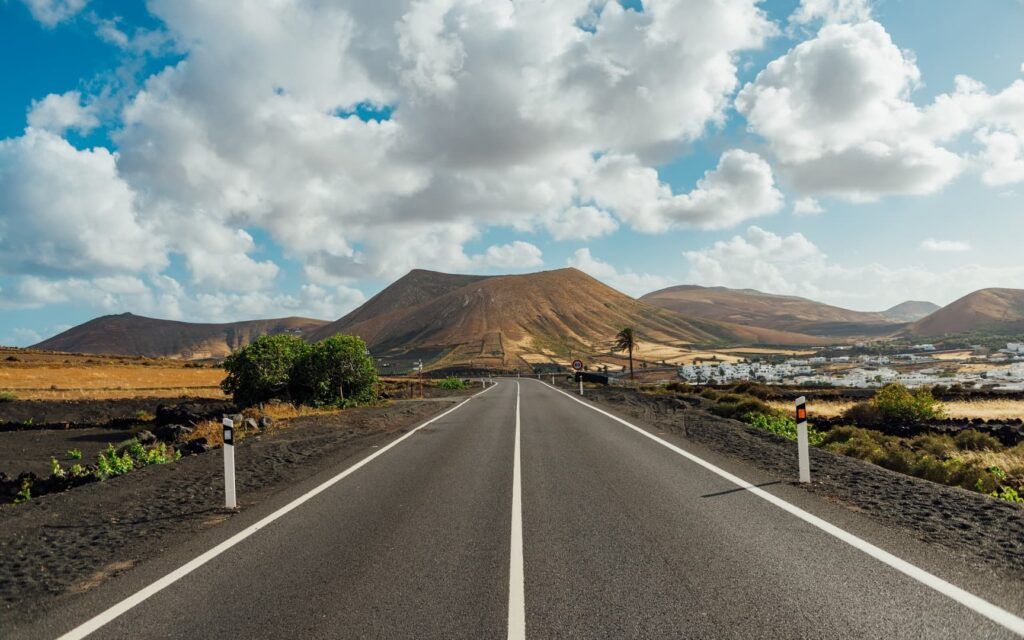
It is said that in the 1st millennium BC, it was already inhabited by the Majos, a people of Berber origins. They found the same habitat as the Middle Atlas and Morocco in this territory. Possibly unearthed by the Phoenicians who were looking for a rare lichen that grows on the rocks, it was surely located by the Romans. They left us a memory in the works of Pliny the Elder. It remained outside the civilised world until Lanzerotto Malocello, Ligurian navigator of Varazze from which it takes its name, (re)discovered Lanzarote in 1312.
Approximately 140,000 people live on the island. The capital is Arrecife and is served by an airport. Thanks to its small size, you can travel its entire length in 2 hours by car. This means visiting the numerous points of interest scattered throughout the island is relatively easy.
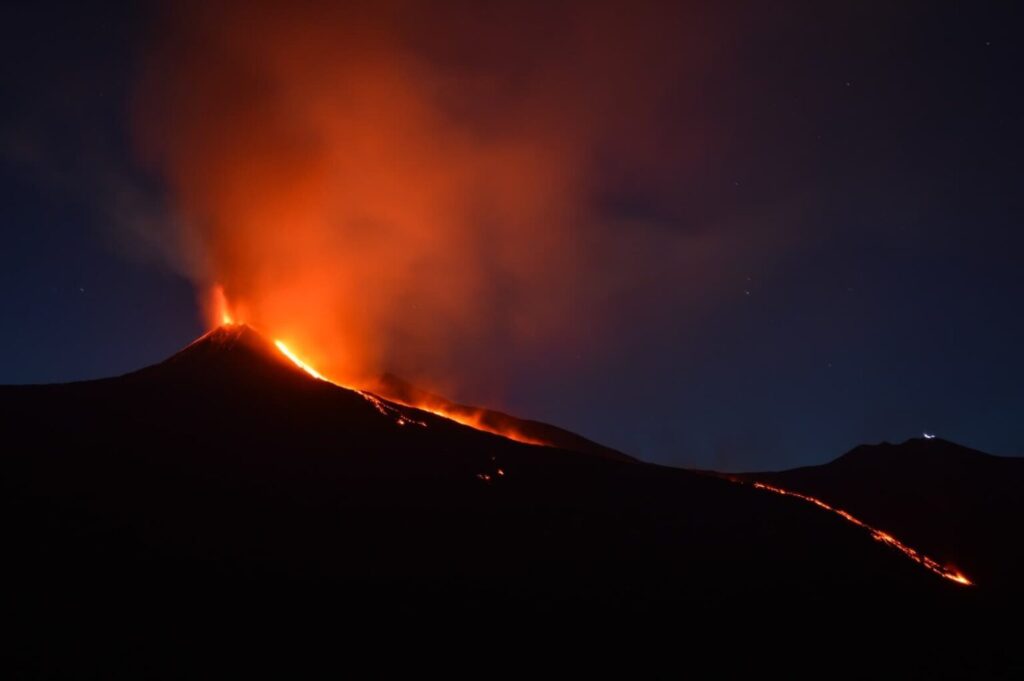
Its beauty is due to its geological history. Lava emissions were already present in Lanzarote 11 million years ago. It was 2 large eruptions between 1700 and 1800 that covered much of the territory south of the island with lava (one billion cubic metres), making it the spectacular lunar landscape that we admire today. These events have had a strong impact on the population and economy of the island that from the cultivation of cereals reinvented wine producers and cochineal exporters.
Since the late 1960s, tourism has taken hold with the construction of 2 factories in the coastal area of Puerto del Carmen. It was precisely in those years that César Manrique decided to return permanently to Lanzarote. He wanted to transform it into a tourist and cultural destination.
Places to visit in Lanzarote: The indelible imprint of César Manrique
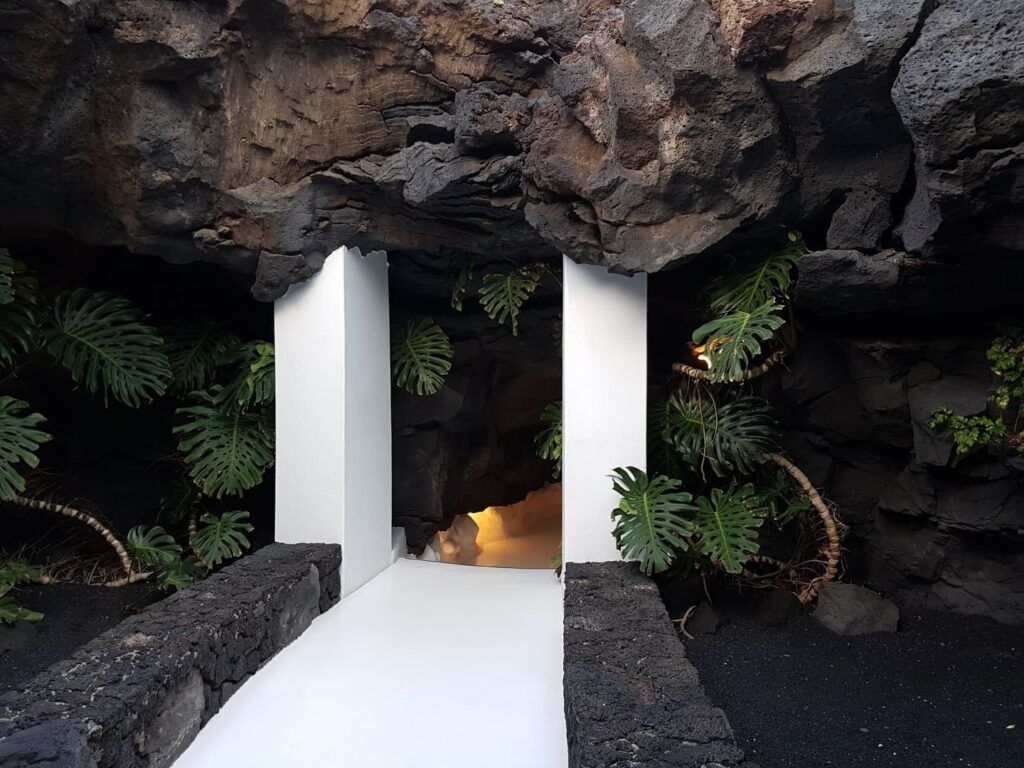
César Manrique was a Spanish artist born in Arrecife in 1919. He was a painter, sculptor, architect, ecologist and urban designer. He played a fundamental role both in the construction of works of art of landscape nature and in the conservation of nature and the beauty of the place.
- Jardin de Cactus – is a wonderful garden where 4,500 specimens of cacti from all over the world are kept. It opened in 1990, it is one of the artist’s last works. It is located in the north of the island, in the Guatiza area.
- Mirador del Rio – A restaurant positioned on a lookout point at the north end of the island. You can enjoy a beautiful view of “La Graciosa” (an island not far from Lanzarote and ideal for a day trip)
- Jameos del Agua – One of the first redevelopment interventions on the island is a “jameo” opening. This opening is toward a volcanic tunnel that was created by the eruption of the Monte de la Corona. A spectacular route that includes a restaurant carved into the rocks, an underground lagoon and even an unexpected amphitheatre.
- LagOmar – A wonderful house carved into the rock, which belonged to Omar Sharif and also a place you can stay.
- Fundación César Manrique – One of the artist’s houses, built in the middle of a lava flow and an excellent representation of the possible dialogue of architecture with nature and the landscape.
You can buy cumulative tickets for these attractions on the official tourism website of Lanzarote.
Timanfaya
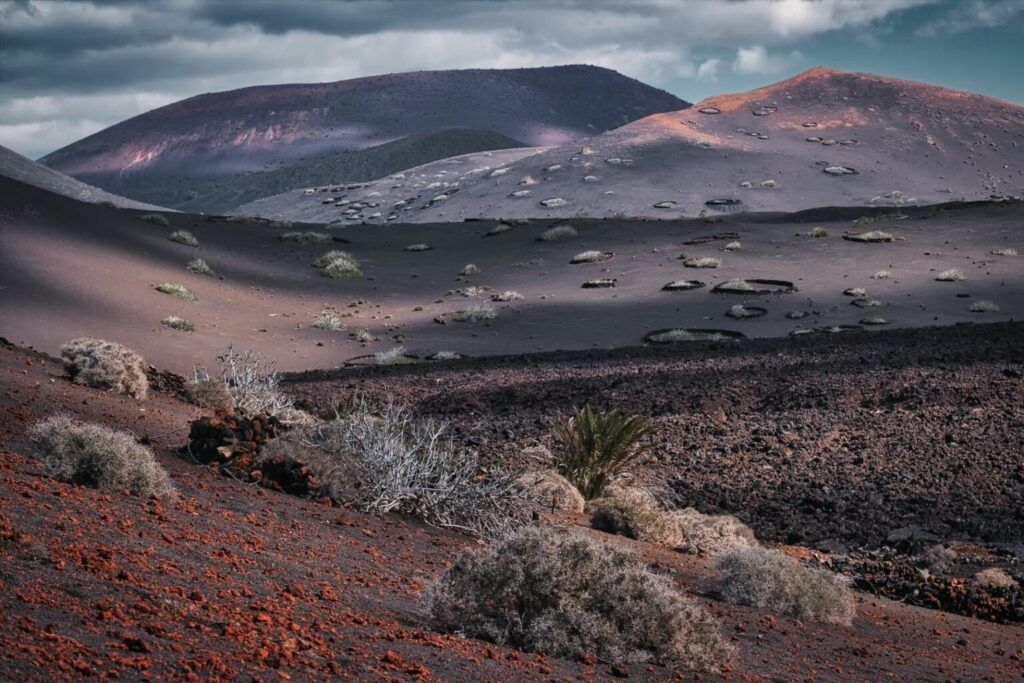
What are the best places to visit in Lanzarote? In our opinion, one of the obligatory stops is definitely the Timanfaya National Park, located in the south of the island. In this park alone there are 25 volcanoes and the entire island has 140 small and medium-sized ones. Timanfaya is an area of 50 square km and due to its vastness, it cannot be visited independently. You can drive to the visitor centre, and then take part in one of the bus tours that depart every 20 minutes.
The bus runs along the Ruta de los Volcanos. You can admire a landscape formed by solidified lava and ash. At the “El Diablo” restaurant, by Manrique again, the fusion with nature is total. Meat and potatoes are cooked thanks to the geothermal heat of the area below.
Still in the Timanfaya area but reachable by car, is Lake Verde or Charco de Los Clicos. It is a protected reserve where a lagoon is nestled between volcanic rock. The seawater that fills this lagoon is coloured green. This is thanks to volcanic minerals that come into contact with plant organisms and algae that is typical to the island of Lanzarote.
There is another very beautiful natural park to the north. The Chinijo, which is also the largest marine reserve in Europe. Could we have excluded it from our list of things to see in Lanzarote? I would definitely say no! The term means “small” locally and is due to the smaller islands that make up the territory. Montaña Clara, Alegranza and La Graciosa, the only inhabited area.
If you are looking for other hiking routes in the Canary Islands, we suggest taking a peek at our article on the Canary Islands and Hiking!
The Geria
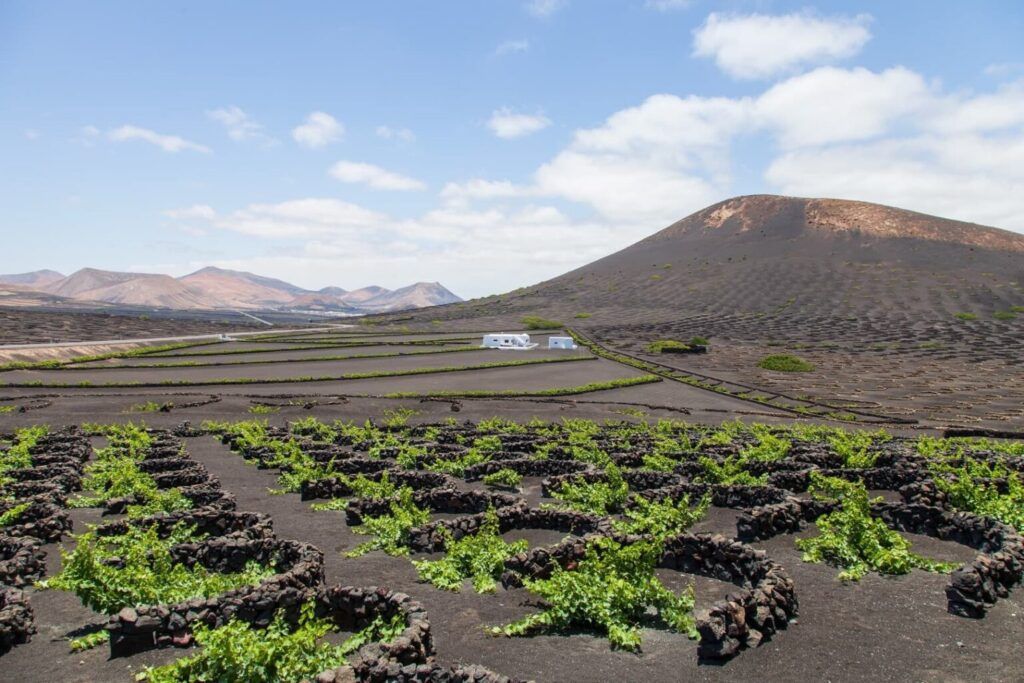
On the way back from the tour to Timanfaya, you can’t miss the Geria, the wine-growing area of Lanzarote. It is one of the most spectacular landscapes. Expanses of dark earth where between one palm and the other individual vine plants meticulously cultivated among circular walls of lava stone stand out. This ingenious solution, which confers total particularity to the territory, protects the vine from the wind, which is the protagonist of the Canary Islands.
The vineyard’s architecture is suitable for manual harvesting that takes place in the period of June-July. Lanzarote is the main producer of wine in the archipelago, famous above all for the white and sweet wines that come from the native vines of Malvasia Vulcanica and Moscatel.
Given the location of the island, which enjoys natural isolation from the rest of Europe, the Lanzarote vine has never been attacked by Phylloxera, a disease that destroyed all European vines in 1800. The vines are then cultivated “free foot“, that is with their own roots, not grafted by roots of American plants that have been used throughout Europe because they are naturally resistant to this disease.
Amazing, isn’t it? Definitely one of the most fascinating places to visit on Lanzarote!
We advise you to try some, there are numerous wineries where you can do tastings and interesting guided tours. They’ll explain how an apparently ungenerous territory can instead give life to the sweetest of wines!
The best beaches (without wind, for those who love sun umbrellas)
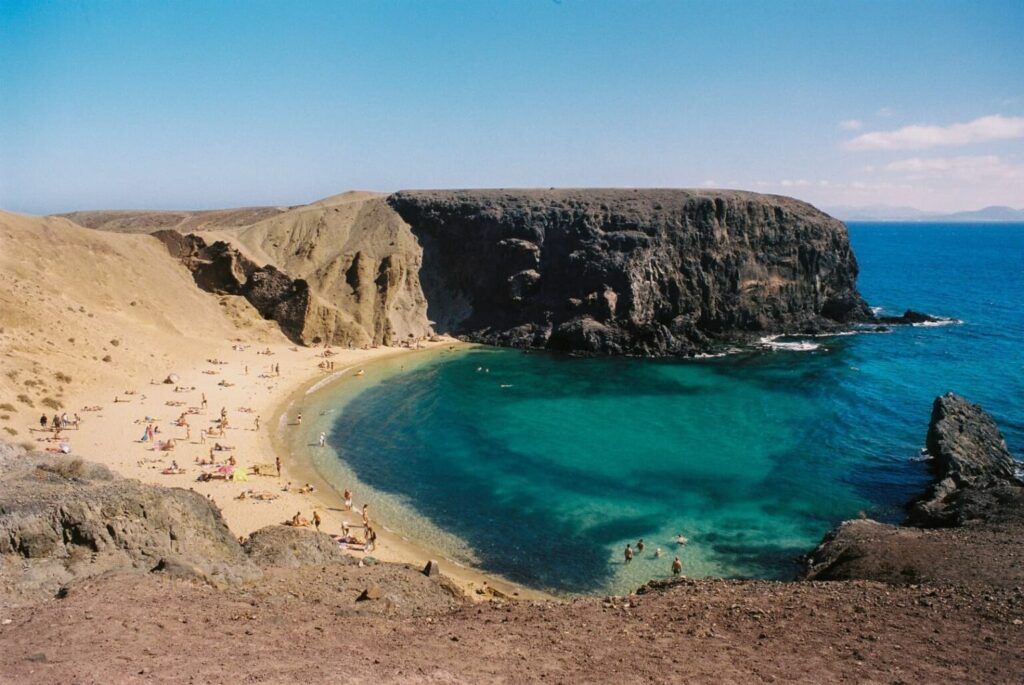
Punta Papagayo –This is a stretch of coastline in the far south of the island. It can be reached by car on a dirt road and is also a nature reserve. It includes several beaches but without a doubt, Playa Papagayo is one of the most famous and often gets a shout-out among the most beautiful beaches in the world.
You can admire it at its best on a sunny day when the colours of the sand, the sea and the mountain shine in all their grace. The sand is white and thanks to the shape of cliffs, it is sheltered from the wind.
Playa Blanca – Also on the southern coast, not far from Playa Papagayo. It is set in a tourist area where there are hotels, resorts and restaurants and a delightful promenade for evening strolls. From here you can also take a ferry for an excursion to nearby Fuerteventura (which is visible to the naked eye). It is also sheltered from the characteristic wind of the Canary Islands, making it one of the most relaxing destinations in Lanzarote.
Puerto del Carmen – Built as a hotel destination, it is located along the east coast of the island. It is packed with services, hotels, restaurants and discos. Surely loved by anyone who wants to party, it includes about 6 km of beaches. They are worth visiting, such as Playa Matagorda, Playa de Los Pocillosi. Many of these are classified as beaches without strong wind, at least by archipelago standards!
Caleton Blanco – In the far north, in the area of Orzola, lies this pool of shallow and crystalline water. The white sand and volcanic rocks create a spectacular landscape.
The best beaches (with the wind, for the fans of surfing)
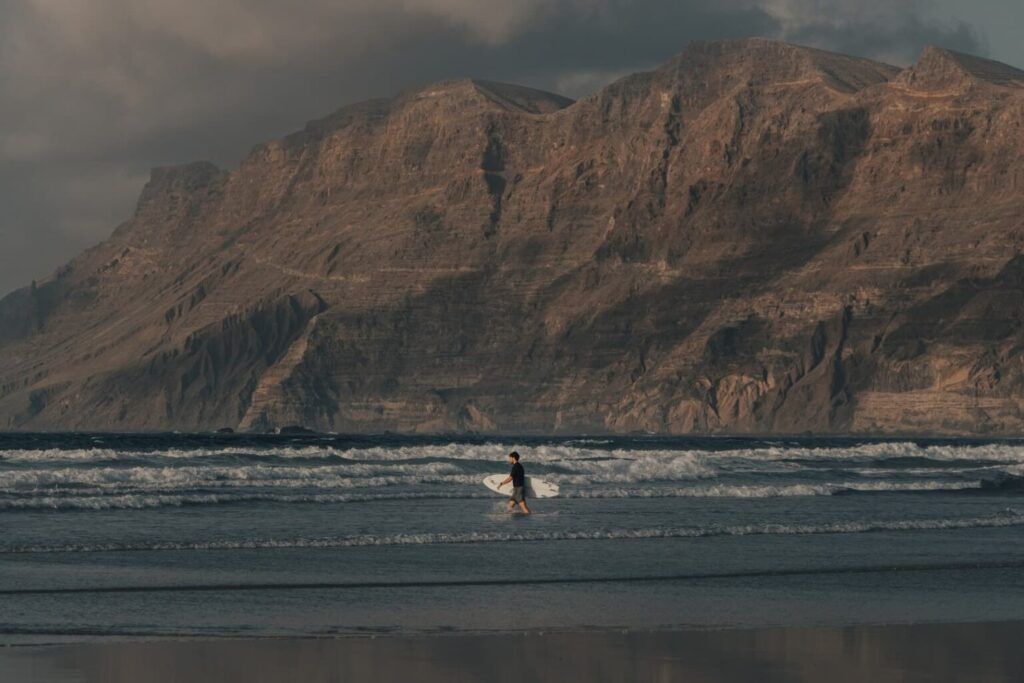
Everyone knows that the Canaries are famous for the wind that characterises them. Lanzarote is just as impressive! The surfers’ paradise is located to the northeast on the stretch of coast that goes from Famara to La Santa. The best time to find the right wind is in autumn-winter, from October to March.
The most famous place is the Playa de Famara which has several spots. From the area of El Barco for beginners to that of San Juan and El Muelle for professionals. In other words, there is something for everyone! You can book courses and rent equipment from numerous places on the beach.
The Santa is a spot coveted by the most experienced surfers. The waves can be incredibly strong and it is only safe at high tide. Halfway between these two resorts is Caleta de Caballo which offers a good mix (concerning the type of seabed at the force of the waves) for all types of surfers.
Do you fancy a trip to the Canaries?
Whether you are a surfer, winemaker, art lover or just someone seeking relaxation and beach life, the Canary Islands will adapt to you. How do we know this? Because we know them well and have organised a journey to discover Fuerteventura. It is an eight-day tour between surfing, nature and relaxation.
And if you’re alone, don’t worry, we’ll bring you some friends. 😉

